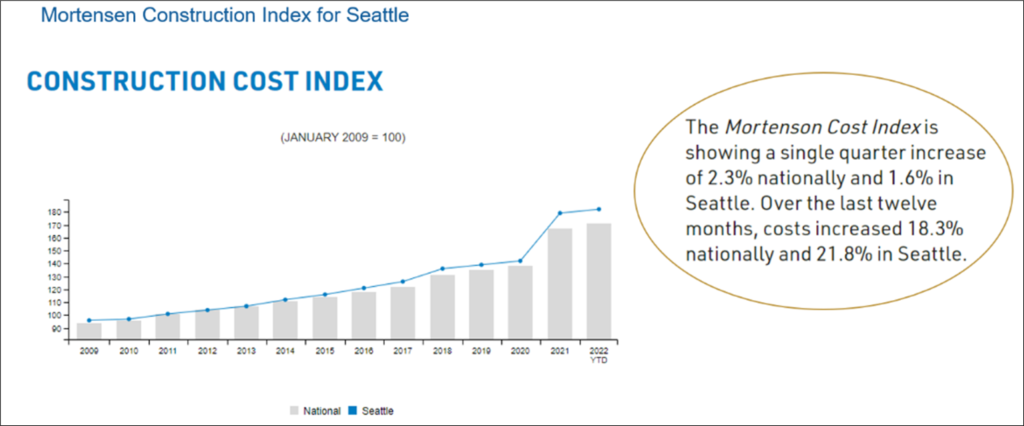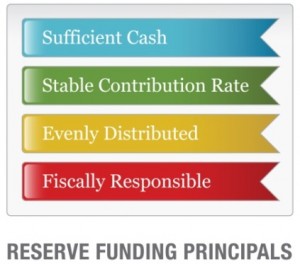Why does your Reserve Study include 3% inflation long term when CPI is > 8% and some Construction Indexes are using inflation rates of over 20%?
Short answer: Our Reserve Studies reflect current inflated costs for expenses projected within the next three years, and a historical average of 3% beyond that timeframe. This approach does not unfairly burden the current owners by assuming today’s high inflation will continue for all 30 years projected in your Reserve Study. Remember that in addition to component conditions (Useful Life and Remaining Useful Life), all current cost, interest, and inflation assumptions are updated in every Reserve Study update. Regular Reserve Study updates continue to be your best strategy in our complex and rapidly changing world.

Long answer:
There is much more to this question than the broadly applied inflation assumption and could be misleading without further explanation. If you are interested, read on!
How long will this current inflation last?
Nobody knows for sure, including the top economists in the country and current and former U.S. Treasury Secretaries. Historical CPI inflation data looking back over the last thirty years will show an average of little less than 3%. The most recent historically high inflationary period for comparison lasted from 1968 – 1982 with the CPI averaging 7.9% annual increases. Yes, times are different and there is much uncertainty in the world.
What about our Reserve Study?
Reserve Specialists are charged with recommending budgeted reserve funding for the one-year period of the upcoming budget cycle. This is balanced against targeted long-term objectives (i.e., Fully Funded, Threshold Reserves, Baseline) over a thirty-year period.

If you were to use the current CPI of 8.6% as an inflation assumption broadly applied over the next thirty years, the current contribution recommendation would increase astronomically.
In recent case studies of our completed Reserve Studies, for every 1% increase in inflation the reserve contribution rate would need to increase 22% to achieve the same objective. This would penalize current and near-term homeowners with higher Reserve funding levels than are appropriate in a multi-year plan.
What about Near Term Repairs & Replacement Cost estimates?
Unfortunately, CPI won’t likely be high enough in your budgeting for many of your near-term expenses. Instead, we rely on local construction indexes which track things like the cost of lumber, copper, steel, construction labor, etal. Those indexes indicate 20 – 25% annual inflation in our Pacific Northwest market, compounding since 2020. Mortenson is one such index:

So, what’s the best answer?

The key is to update your Reserve Study diligently each year, adjusting the near-term (next three years) projected expenses to current (inflated) costs and projecting historical inflation averages for the remaining years. This balanced approach is consistent with National Reserve Study Standards, which dictates that Funding Plans are balanced to achieve four principles.
A balanced approach of acknowledging current high inflation, with the expectation for more historically consistent “normal” inflation rates for the majority of the years in your Reserve plan, effectively achieves this objective.
No need to panic.
Rest assured that we continue to watch the economic data closely! Our goal is to make the future more secure for our clients and one way we do that is by revisiting the Reserve Study decisions we make each year that we serve as your Reserve planning partner.
If you have further questions or concerns about how interest is handled in a specific Reserve Study, please contact your Project Manager.
